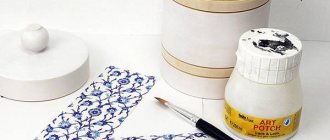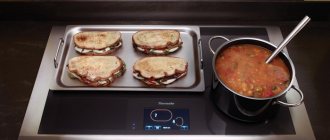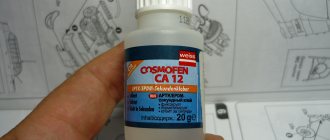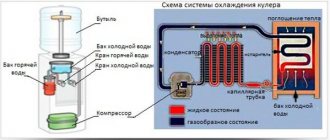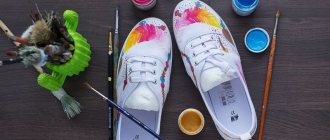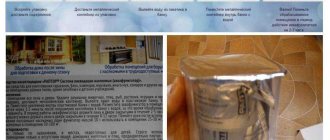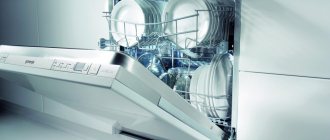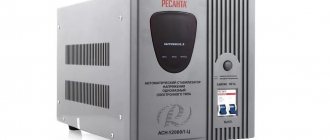There is no need to explain how unpleasant the fact of new scratches and damage to furniture cladding can be. Restoring chips on furniture requires incredible patience and, in some ways, even a creative approach, since standard recipes and theoretical recommendations cannot always be used and successfully applied in practice. Nevertheless, removing scratches from furniture at home is quite possible; you just need to correctly assess your capabilities and select the necessary materials.
Working with toner on a chip is similar to painting
About glue water resistance classes
In Europe, each construction and other product has its own definitions.
As for glue, it also has designations. Most often, when talking about this, they mention the water resistance classes of glue according to the DIN EN 204 standard, which has successfully taken root in Russia. Let's talk briefly about each of these classes.
- D1. Lowest water resistance class. Adhesive compositions of this class can be used indoors, the temperature in which is less than 50 degrees Celsius. The moisture content of the wood should be no more than fifteen percent. Brief exposure to water is allowed.
- D2. A little higher class. It can be used in the same rooms, but the permissible moisture content of wood material is slightly higher - up to eighteen percent. Brief exposure to water is allowed.
- D3. Quite a popular class of glue. It can be used not only inside a house or apartment, but also outside. Brief exposure to water is completely acceptable. At the same time, D3 class adhesives themselves can be used with more damp wood materials.
- D4. Like the D3, the D4 is suitable for both indoor and outdoor use. Withstands exposure to water, but still requires a protective coating to protect the adhesive.
Each water resistance class has its own characteristics
What is the best way to glue wood to wood?
For carpentry needs, a fairly wide range of adhesive materials is used: various types of PVA adhesives, polyurethane compounds, epoxy resin, contact adhesive, etc. The choice of the most suitable adhesive option is made with a focus on the following features of the project:
- characteristics of the tree itself (oily content, level of adhesion, etc.);
- characteristics of the loads that will fall on the seam (including shocks and vibrations);
- conditions in which the product will be used (humidity, temperature changes, exposure to moisture).
You can read about the working properties and areas of application of the main types of wood glues here.
How to fix chipboard
Combination of beech with other colors.
combination of beech furniture color with other colors These flat furniture dowels (slats) are inserted into the grooves selected by the slats.
They prevent the parts from moving during displacement, and also add strength to the final connection, significantly increasing the gluing surface.
We coat the mating surfaces with glue (any PVA-containing glue will do).
We connect the parts and clamp them with clamps until the glue dries completely. After removing the clamps, glue drips remain on the corner - they do not need to be removed, because... Later they will fall off on their own.
The next step is to smooth the corner. It is carried out either with an angular cutter (45 degrees) or with a cylindrical cutter, but for this the router must have an angular base.
After cutting the corner, you get this trapezoidal profile. Now our task is to improve this corner
You can, of course, just paint it or stick an edge on it, but the edge will not stick, and when painting you won’t be able to get a neat, flat surface
The cut must be puttied. In this case, automotive putty with fiberglass is used (what was on hand), but it is better to use more homogeneous mixtures.
Degrease the surface to be putty.
The solution for this should not contain water. Apply the composition with a spatula, rubbing it into the pores and leveling.
After final drying, we finally smooth the surface with a sanding block with fine sandpaper. Now let's paint it over. Cheap spray paint will work for this.
To protect the surface of the edge of the cut, we glue it with masking tape and cover it with paint 2-3 times. For additional durability and shine, we open it with a layer of acrylic varnish.
We cut off any streaks of varnish that remain after it has completely dried with a utility knife. It seems nothing complicated, but the result is very interesting.
Carpentry. Mastery lessons.
We glue furniture edges with our own hands
How to repair a crack between a house and a blind area
There are two technologies for gluing furniture edge tape. The first is for those that have glue applied to the back. In this case, an iron or a hair dryer is needed. The second is for gluing tapes without glue. In this case, you need a good universal glue that can glue plastics and wood products and a furniture roller, a piece of felt or a soft rag so that you can press the edge well against the cut.
It’s possible to get such an edge at home
A little about what thickness of edge to glue on which parts. Those edges that are not visible, according to GOST, do not need to be glued at all, but basically they try to treat them so that less moisture is absorbed into the chipboard, and also to reduce the evaporation of formaldehyde. Melamine tape or 0.4 mm PVC is glued to these edges. The edges of the drawers (not the fronts) are also processed.
It is better to use 2 mm PVC on the front ends of the facade and drawers, and 1 mm PVC on the visible sections of the shelves. The color is chosen either to match the main surface or “in contrast”.
How to glue edging yourself with glue
The adhesive composition is applied to the melamine edge; it can be applied to PVC. If you choose PVC, it’s easier to start with thin ones - they are easier to process, any melamine is easy to glue.
We take an iron and a fluoroplastic nozzle on it. If there is no nozzle, thick cotton fabric will do - so as not to overheat the tape, but to melt the glue. A hair dryer is also suitable for this purpose. We set the iron to about “two”, while it is heating up we cut off a piece of tape. The length is a couple of centimeters longer than the workpiece.
Place the edge tape on the part
We apply the edge to the part, level it, smooth it out. There should be small pieces hanging off both sides. We take an iron and, using a nozzle or a rag, iron the edge, heating it until the glue melts. It is necessary to heat evenly over the entire surface. After the entire edge is glued, let it cool. Then we start processing the edges.
The edge can be cut with a knife, both with the sharp and blunt sides. Some people use a regular metal ruler, while others find it more convenient to use a stainless steel spatula.
So, take the tool you have chosen and cut off the hanging edges of the edge. They are cut close to the material. Then cut off the excess along the part. Melamine and thin plastic are easily cut with a knife. If the PVC edge is thicker - 0.5-0.6 mm or more, difficulties may arise. Such edges can be processed with a hand router, if you have one. This guarantees good results in a short time. The processing will take longer if you use sandpaper, but the result may not be worse.
You can even use a spatula with a hard blade
One important point: when gluing thin edges, the cut of the part must be smooth, without protrusions and depressions. The material is plastic, which is why all defects are visible. Therefore, first go over the cuts with sandpaper, then thoroughly remove dust and degrease. Only after this can you glue.
Edging with PVC tape (no glue on the back side)
With this method of gluing PVC edges yourself, you need universal glue and a piece of felt or rag. We read the instructions for the glue and carry out all the steps as recommended. For example, for Moment glue, you need to apply the composition to the surface and distribute it, wait 15 minutes, and firmly press the surfaces to be glued.
Apply glue and wait - no problem. To press the edge tightly to the cut, you can use a wooden block wrapped in felt. Instead of a block, you can take a construction float and also attach felt to its sole. As a last resort, you can roll up thick fabric in several layers and press the tape to the surface.
Press firmly, leaning with all your weight
The selected tool is pressed against the laid edge, pressed with all its weight, pressing it to the surface of the chipboard. The movements are stroking. This is how they iron the entire edge, achieving a very tight fit. The part is left in this form for some time - so that the glue “seizes.” Then you can start processing the edges.
We glue furniture edges with our own hands
How can you remake an old mezzanine between the kitchen and the hallway?
There are two technologies for gluing furniture edge tape. The first is for those that have glue applied to the back. In this case, an iron or a hair dryer is needed. The second is for gluing tapes without glue. In this case, you need a good universal glue that can glue plastics and wood products and a furniture roller, a piece of felt or a soft rag so that you can press the edge well against the cut.
It’s possible to get such an edge at home
A little about what thickness of edge to glue on which parts. Those edges that are not visible, according to GOST, do not need to be glued at all, but basically they try to treat them so that less moisture is absorbed into the chipboard, and also to reduce the evaporation of formaldehyde. Melamine tape or 0.4 mm PVC is glued to these edges. The edges of the drawers (not the fronts) are also processed.
It is better to use 2 mm PVC on the front ends of the facade and drawers, and 1 mm PVC on the visible sections of the shelves. The color is chosen either to match the main surface or “in contrast”.
How to glue edging yourself with glue
The adhesive composition is applied to the melamine edge; it can be applied to PVC. If you choose PVC, it’s easier to start with thin ones - they are easier to process, any melamine is easy to glue.
We take an iron and a fluoroplastic nozzle on it. If there is no nozzle, thick cotton fabric will do - so as not to overheat the tape, but to melt the glue. A hair dryer is also suitable for this purpose. We set the iron to about “two”, while it is heating up we cut off a piece of tape. The length is a couple of centimeters longer than the workpiece.
Place the edge tape on the part
We apply the edge to the part, level it, smooth it out. There should be small pieces hanging off both sides. We take an iron and, using a nozzle or a rag, iron the edge, heating it until the glue melts. It is necessary to heat evenly over the entire surface. After the entire edge is glued, let it cool. Then we start processing the edges.
Warm up with an iron
The edge can be cut with a knife, both with the sharp and blunt sides. Some people use a regular metal ruler, while others find it more convenient to use a stainless steel spatula.
So, take the tool you have chosen and cut off the hanging edges of the edge. They are cut close to the material. Then cut off the excess along the part. Melamine and thin plastic are easily cut with a knife. If the PVC edge is thicker - 0.5-0.6 mm or more, difficulties may arise. Such edges can be processed with a hand router, if you have one. This guarantees good results in a short time. The processing will take longer if you use sandpaper, but the result may not be worse.
You can even use a spatula with a hard blade
One important point: when gluing thin edges, the cut of the part must be smooth, without protrusions and depressions. The material is plastic, which is why all defects are visible. Therefore, first go over the cuts with sandpaper, then thoroughly remove dust and degrease. Only after this can you glue.
Edging with PVC tape (no glue on the back side)
With this method of gluing PVC edges yourself, you need universal glue and a piece of felt or rag. We read the instructions for the glue and carry out all the steps as recommended. For example, for Moment glue, you need to apply the composition to the surface and distribute it, wait 15 minutes, and firmly press the surfaces to be glued.
Apply glue and wait - no problem. To press the edge tightly to the cut, you can use a wooden block wrapped in felt. Instead of a block, you can take a construction float and also attach felt to its sole. As a last resort, you can roll up thick fabric in several layers and press the tape to the surface.
Press firmly, leaning with all your weight
The selected tool is pressed against the laid edge, pressed with all its weight, pressing it to the surface of the chipboard. The movements are stroking. This is how they iron the entire edge, achieving a very tight fit. The part is left in this form for some time - so that the glue “seizes.” Then you can start processing the edges.
Varieties
Several types of adhesives have been identified, differing in purpose. Each has a high drying strength. Varieties:
- Water-based - PVA, animal. Designed for fixing fabric bases of furniture, foam elements, non-woven fibers. When attaching such bases, other types are not suitable, as they can damage the surface (superglue can corrode the fabric.
- Carpentry (resorcinol). Made from aliphatic resins. Used for gluing wooden elements. Subsequently, the glued product can be used outdoors.
- Contact – rubber-based, thermal, PVA of special strength. Purpose: repair, restoration of furniture that is used indoors and outdoors. It sets quickly, but it dries completely within a day.
Several types are distinguished according to the principle of solidification:
- Quick drying. These include PVA; it is enough to leave the glued element in a ventilated area for rapid gluing to occur.
- Hot melt adhesives. They are produced in the form of granules, cartridges, etc. To activate the functions, it is enough to bring them into a liquid state by heating.
- Thermosetting. Bonding occurs under the influence of increased temperatures. This type is divided into single-component (ready to use immediately) and multi-component (requires preparation before application).
Depending on the form of production, adhesive masses are liquid, solid, or dry.
Furniture adhesive containing a solvent quickly fixes and dries due to the evaporation of the volatile substance. Water-based bases are glued over a longer period.
Interesting video on the topic:
Useful tips
Oddly enough, amateur attempts to repair chips or restore more serious damage to furniture sometimes cause more damage than simply tinting or painting a furniture touch.
For example, you should not use water-based dyes to fill scratches, cracks and swelling of furniture veneer. Do not use iodine, strongly brewed tea, an aqueous solution of potassium permanganate, watercolors, gouache, or car varnishes. As an exception, you can temporarily mask scratches on furniture with walnut.
All of the above can hide the damaged area for a while, but, as a rule, it causes swelling of the decorative coating due to swelling of the wooden base of the furniture.
The largest chips and even breaks, which often happen on armrests or the ends of doors, cabinets, especially kitchen furniture, can be treated by applying a repair varnish layer to the entire front surface. In this way, it is possible to preserve the mirror of the lacquered surface, and this is the most important thing in the restoration of wooden furniture. If you repair chips and the entire panel of furniture with “solid” varnish, then the damaged area may not be visible even with the most careful examination.
Types of furniture edges
One of the most popular materials for making furniture is chipboard. Its disadvantage is the unsightly edges that remain when cutting the part. These edges are masked by the furniture edge. It is made from different materials, and accordingly, it has different properties and prices.
You can also get this edge yourself
Paper or melamine edges
The cheapest option is melamine-impregnated paper edges. The paper is taken of high density, impregnated with melamine to increase strength and glued to papyrus paper. Papyrus can be single-layer (cheaper) or double-layer. To prevent the melamine coating from wearing off, everything is covered with a layer of varnish. To make it more convenient to edge the parts, an adhesive composition is applied to the back side of the melamine furniture edge. When working, you just need to slightly warm up this composition and press it well against the end.
Paper or melamine edge is the cheapest, but also the most short-lived option for finishing the ends of furniture
The thickness of paper edge tapes is small - 0.2 mm and 0.4 mm are the most common. There is no point in making it thicker, and it will be expensive.
This type of edges is distinguished by the fact that it bends very well and does not break when bent. But its mechanical strength is very low - the edge quickly wears out. Therefore, if it is used, it is only on those surfaces that are not subject to load. For example, on the back of shelves, table tops, etc.
PVC
Polyvinyl chloride, which has recently become widespread, is also used in the production of edges for furniture. A ribbon of a certain width and thickness is formed from a mass painted in a certain color. Its front surface can be smooth, monochromatic, or it can be textured - with imitation of wood fibers. The number of colors is large, so it’s easy to choose the right one.
PVC furniture edging is the most popular material used by both home craftsmen and professionals. This is due to the relatively low price and good performance properties:
- High mechanical resistance.
- Withstands exposure to chemicals (household chemicals, for example).
- Waterproof material protects the ends of the product from moisture.
- PVC is an elastic material, which allows you to process curved surfaces.
- It can be processed well using simple tools, which allows you to get good results even at home.
Different edge thickness looks different
PVC furniture edging is available in different thicknesses and widths. Thickness - from 0.4 mm to 4 mm, width from 19 mm to 54 mm. The thickness is chosen depending on the expected mechanical load or external appearance, and the width is slightly larger (at least 2-3 mm) than the thickness of the workpiece. There is a furniture PVC edge with an adhesive applied, and there is one without. Both can be glued at home (more on that below).
This type of edge material also has disadvantages: not a very wide temperature range: from -5°C to +45°C. For this reason, furniture cannot be left outside in winter, and when pasting with heat, you must be careful so as not to melt the polymer.
Made from ABS plastic
This polymer does not contain heavy metals and is characterized by high strength and durability. The disadvantage can be considered the high price, therefore it is used extremely rarely, although it has excellent properties:
- It is resistant to high and low temperatures, so when gluing you can use glue with any melting point. Small shrinkage when heated - about 0.3%.
- High mechanical stability.
Several options for edge tape made of ABS plastic
This type of edge can be matte, glossy or semi-gloss. There are also options that imitate various types of wood. In general, this material is more convenient to use and more durable to use.
Veneer edge
Veneer is a thin section of wood, colored and shaped into a strip. This furniture edge is used in production for gluing sections of veneered products. Working with this material requires certain skills, and the material is expensive.
Veneer is not the most popular material for edging
Acrylic edge or 3D
Made from transparent acrylic. A design is applied to the reverse side of the strip. The layer of polymer on top gives it volume, which is why it is called a 3D edge. Used in the production of unusual furniture.
Acrylic gives the picture volume
Countertop materials
Different materials are used for kitchen countertops:
- metal;
- plastic;
- stone;
- glass;
- tree;
- chipboard;
- MDF;
- stone;
- concrete.
Plastic
Plastic furniture is very short-lived. It is, of course, easy to process, it can be quite beautiful and bright, but it has to be changed too often. For a dacha this is an ideal option; for a city kitchen there may be more interesting materials.
Important! True, plastic has an absolutely wonderful property - it is not afraid of water, so countertops made of metal or wood are most often made with a plastic coating.
Advantages of chipboard
Quite often in kitchens you can see stone and even concrete tables. It’s fashionable, but it’s unlikely that you’ll be able to make one yourself. The most suitable material for a beginning carpenter is chipboard or MDF. These materials have many advantages:
- they are cheap;
- they are easy to work with;
- you can choose a very impressive finish, and your table will be in no way inferior to the factory one.
Types of PVC edges
The construction market offers a large number of multi-colored finishing materials. The furniture edge not only covers the end surfaces, but is also a decorative element. Each type of edge differs in price, fastening, advantages and disadvantages. Let's look at the most common types of finishing materials.
Melamine (unoflex)
The edge consists of several layers of paper. The top layer is considered decorative, since it contains a pattern that is glued to the backing. There are two types of border - single-layer and multi-layer. Manufacturers produce tape with a thickness of no more than 0.6 mm and a width of 16-55 mm. You can easily glue the edge to the chipboard yourself using an iron. The material is purely environmentally friendly, as it contains no synthetic impurities. It should be noted that due to the insignificant thickness of the tape and paper structure, after 2-2.5 years it loses its aesthetic appearance. Manufacturers produce edges in rolls of 200 megapixels, but in the retail chain they are sold from 1 megapixel. The cost of the tape is low. For example, the price is 1 MP. edges 0.4*19 mm is 10 rubles.
It is not recommended to use melamine edging for kitchen structures. Paper-based edging will not last long. It is recommended to use PVC material.
The highest quality plastic is used for manufacturing. On the reverse side there is a primer - this is a relief pattern, a protector, which promotes better adhesion of the border to the chipboard. The sides and grooves hide the presence of chips. This edging is quite labor-intensive. On edging machines, manufacturers produce PVC tape with a thickness of 0.2 - 10 mm, and the width depends on the thickness of the chipboard sheet, which can be from 22 mm to 54 mm. PVC tape is sold with or without adhesive. The price of edging material depends on its width and thickness. For example, if the edge width is 19 mm and the thickness is 0.5 mm, then the wholesale cost of a 200 MP roll costs 400 rubles. Today, manufacturers have released aluminum, chrome, and steel colored edging onto the market. Gluing edges on chipboard at home is done directly into the sheet, which makes the product durable. To avoid melting the polymer, you need to monitor the temperature, which should not exceed +45°C. The protective functions of the edge material are designed for a minimum of 5-6 years.
It is not recommended to use ethylene vinyl acetate stick in a glue gun. There will not be good adhesion between the edge material and the end. A little physical activity will peel it off from the edge of the product.
ABS (ABS - Acrylonitrile/Butadiene/Styrene).
This is an impact-resistant thermoplastic that retains its appearance for a long time. It is not dangerous when heated and during processing as it does not contain chlorine or heavy metals. The manufacturer produces finishing materials with thicknesses of 0.4 mm, 1 mm, 2 mm. Do-it-yourself edging tape is applied to furniture structures that can withstand low temperatures and high humidity. For internal processing of furniture boxes, edging is done with 0.4 mm, 1 mm tape, and for the front sides, 2 mm thickness is used. It should be taken into account that when heated, the edge may shrink by 0.3%. Edge material comes in a variety of colors with gloss, semi-gloss and matte finishes.
The finishing material can be used to treat a countertop, kitchen or office table, wall shelf and other interior items. In each type of tape material, it should be noted that there is a wide range of colors. To decorate the surface, you can choose a contrasting ribbon.
How to glue an edge with an iron
In production, edging is done using tape with a clean base. The adhesive composition is applied to it during installation at a high temperature, ensuring the formation of a thin, even layer. In order to glue the edge, several rollers are used, pressing it tightly to the base of the chipboard. Then special cutters cut the tape to the size of the part, remove any remaining glue and base material, and sand the joint until a smooth and beautiful surface is obtained.
You can also glue the edge at home. To do this, you need to use tape with an adhesive composition already applied. Further, the process largely repeats industrial edging, since it is performed in a similar way:
Melamine tape can be glued with a regular household iron. To do this, you need to cut off a piece of edge with a margin of length and width, place it on the end being processed and carefully smooth it with an iron. After passing through the iron, the heated surface must be pressed using a wooden block or any other object capable of transmitting the necessary load.
When heated, the adhesive firmly adheres the edge to the chipboard
After the edge strip for chipboard is glued, it is necessary to trim off its hanging ends and treat the surface of the edge. The tape is cut with a sharp knife located strictly perpendicular to the plane of the end.
The knife used to remove excess edges must be very sharp.
After cutting, the edge must be sanded. This can be done using a block with sanding paper attached.
You can find out more about the process of gluing edges on chipboard below:
Gluing the U-shaped profile to the end of the chipboard is somewhat easier. We have already discussed this method earlier. This edge is much stronger than melamine, bends quite easily and reliably protects against damage.
The presence of microgaps between the U-profile edge and the front surface of the chipboard does not allow gluing it in the kitchen or bathroom, so edging with this material is mainly used for office furniture.
Edging chipboard, of course, is best done in the factory. At the factory, you can order tape from any materials, including plastic, PVC and other modern composite materials. Edging on a machine will ensure ideal evenness and accuracy of application of decorative cladding, but it requires certain costs. If the main task is to meet a predetermined small budget, applying melamine tape with your own hands will allow you to combine acceptable quality and the minimum price.
You might be interested to know
https://drevplity.ru
Furniture edging is an edge material that performs a protective and decorative function. These products are used to decorate the uncoated part of furniture facades and prevent minor mechanical damage and swelling caused by high air humidity.
When to contact a specialist
You should contact a specialist in case of serious damage, for example, broken furniture, and lack of special skills and knowledge. Also, you should not attempt to repair expensive or memorable furniture yourself, as there is a risk of causing irreparable damage to it.
If furniture made from chipboard is severely damaged, you should contact a specialist. If you need not just minor repairs or minor elimination of defects, but a serious comprehensive restoration, then it should definitely be entrusted to the appropriate specialist or cabinetmaker.
Before you repair chipboard furniture with your own hands, you need to evaluate your strengths and select suitable materials. If you work carefully, you can achieve a high-quality update in the appearance of products.
What varieties are suitable for work?
To fix objects made of chipboard, it is permissible to use different means. To achieve good results, you need to choose the right composition.
PVA
Sometimes PVA glue is called a dispersed composition for gluing. The main characteristics of this product include the following:
- lack of toxic properties - thanks to this, the product can be used indoors without additional safety measures;
- quick adhesion to surfaces;
- a sufficient level of static load - it is 60 kilograms per square centimeter;
- indefinite period of product operation;
- Possibility of application for different types of surfaces.
The disadvantage of the composition is the method of breeding. It is based on adding water. This negatively affects the reliability of fixation in rooms with high humidity. To improve the quality of bonding of elements with this product, it is recommended to add wood dust to the composition.
Carpentry
This glue is also called animal glue. It is a durable substance that is used to fix wooden parts to each other. To prepare the composition, the granules of the product should be dissolved in water and prepared in a special device.
Contact
This glue contains volatile components. This furniture composition retains its characteristics for several minutes after use. This helps make adjustments to the fixation process. Items should be glued under continuous pressure. This helps to get maximum effect. The substance is considered very durable and at the same time has high elasticity. Volatile components that are released during setting are characterized by an unpleasant odor.
The best brands on the market
There are many effective products on sale that provide reliable fixation of chipboard objects.
"Carpenter PVA Moment"
This is a universal substance that is distinguished by its water-dispersion base. It is used to secure plywood, chipboard and other materials for a strong hold. After application, it is recommended to wait 20 minutes. The composition does not affect the shade of the coating. It is recommended to carry out work at a temperature of 5-30 degrees.
The disadvantages of the coating include insufficient moisture resistance. It is also not recommended to work at low temperatures.
"Titebond"
This composition is suitable for fastening wooden structures. The adhesive is used in the manufacture of flooring and plywood. The base can be polymer, protein, polyurethane. The product is resistant to moisture and frost. It provides reliable fixation and is resistant to solvents. Excess substance can be easily removed before polymerization begins.
"Kleyberit" 303.0, 501.0
Adhesive 303.0 is resistant to moisture and provides fixation to all types of wood. After drying, the composition has a white color. It can be used at temperatures down to -30 degrees. Substance 501.0 is characterized by a polyurethane base. It is resistant to moisture and high temperatures. The composition is capable of fixing wooden surfaces. It can also be used to combine wood with tiles, ceramics, and concrete. The composition can be used for surfaces inside and outside. The disadvantage of the product is that it is difficult to remove from the skin, so it is recommended to work with it in personal protective equipment and thoroughly ventilate the room.
See also
Types and properties of aerosol glue, popular brands and applications
Why else do they edge furniture?
In addition to the most obvious goal - to provide an elegant appearance, edging furniture performs several more equally important tasks:
Moisture protection. It is known that when wet, chipboard swells and loses its original shape and strength. The plastic edge prevents moisture from penetrating from the ends. This is especially true for rooms where there are constant flows of water - kitchen, bathroom, dining room, etc.
The edge, in addition to giving the furniture a finished look, performs several other important functions.
Protection against insects and mold. The porous surface of particle boards is well suited for the proliferation of various microorganisms that destroy the internal structure of the material. If you glue a protective film to the edge, the service life of the furniture will noticeably increase.
Fight against harmful substances. As is known, in the production of chipboards, formaldehyde resins are used, vapors of which can be released during operation through the open ends. The edge tape prevents these substances from entering the environment.
What kind of glue is there?
Furniture glue is available in certain varieties. The types differ in composition and parameters, and before purchasing any product you should study the information on the bottle or packaging. This will allow you to choose an adhesive that is ideal for the planned work. Most often, the products listed in the table are chosen for repairing various furniture.
Type of glue Its characteristics PVA This glue is considered the most common. It is considered an ideal choice for wooden structures, as well as for decorative elements made from cardboard or paper. The undeniable advantages include its affordable cost, and it is also considered easy to use. Available in a certain number of types, each of which has its own purpose. If PVA-1 is selected, then it can be used in residential premises. To prepare the composition, it must be mixed with water. PVA-2 can be used for outdoor furniture. This is due to the fact that it has excellent water-repellent characteristics. Keep in mind that after working with this glue, some unattractive yellow spots may remain on the surfaces. Joiner It is highly durable, so it can glue even the most complex and hard surfaces. To prepare a solution of optimal consistency, the granules should be dissolved in water, after which the mixture is boiled for a certain time over high heat, which allows you to obtain the desired composition. It is highly durable and does not collapse under the influence of various factors for a long time.
Its disadvantages include the duration and complexity of preparation. Contact It contains volatile substances, so it is important to work with it carefully. To do this, be sure to wear a respirator and use protective gloves.
The glue retains its parameters for a certain time after application, so it is possible to adjust the parts being glued. It is important to perform the process under pressure to achieve the best effect. This solution is distinguished by good strength and elasticity. During operation, an unpleasant and pungent odor appears. Hot-melt adhesive Used exclusively with a special gun. The adhesive properties appear in the composition after heating. The solution hardens quickly. Resorcinol May consist of one or two components, the first being mixed with water, and the second with a hardener. The adhesive is formed on the basis of different epoxies, so when working with it you need to use protective clothing and put on a respirator, otherwise it may cause harm to human health. The composition is moisture resistant and is also considered an ideal solution for filling numerous cracks.
Thus, there are many options for furniture glue, but it is impossible to say exactly which glues better and has the best composition, moisture resistance and other parameters. This is due to the fact that each type of glue is suitable for certain furniture.
PVA
Carpentry
Contact
Criterias of choice
To choose a high-quality adhesive for fixing objects made of chipboard, it is worth considering many criteria.
Surface type
As a rule, on the packaging in the “scope of application” section information is provided about the materials for which it is permissible to use glue. If such information is not available, it is recommended to obtain it by other methods. The components will also help determine the types of surfaces that can be glued. If the composition is not indicated on the packaging, such glue should not be used. It may cause property damage.
Base type
Correctly chosen glue can provide reliable fixation, but damage the base of the furniture. To avoid such problems, you should choose synthetic elastomers. Such substances do not cause negative consequences.
How long can it be stored?
The shelf life of the glue is indicated on the packaging. As a rule, it is a maximum of 45 days. If the substance disappears, it changes its consistency and begins to thicken.
Harmful components
The adhesive should not contain trichloroethane. This component causes serious harm to health. Its fumes pose a danger to people. It is also worth considering that the ingress of water onto a surface treated with glue provokes an irreversible oxidation process. This will minimize any attempts to improve the condition and appearance of the furniture.
Consistency
When choosing a composition, it is worth considering its density. The minimum parameters should be 1.1 grams per cubic centimeter. This consistency is considered liquid, but it is enough for complete fixation. Lower settings will not give the desired degree of fixation.
Color
Most types of glue are yellow, white or another shade. When using the substance, this feature should be taken into account. Many people try to use colorless formulations. The opaque mass will be noticeable even under a layer of varnish.
Cleaning and repair of mechanisms
Moving parts are the most susceptible to breakdown; parts of these parts become unusable over time and require replacement. You can independently repair or replace elements such as rollers, springs, meshes, rivets and slats.
Mechanisms on chipboard furniture also need to be cleaned periodically. Each of their mechanisms requires an individual approach to diagnosis and repair, but the general operating procedure is as follows:
- Dismantle the mechanism.
- Take it apart into its component parts.
- Install the damaged element.
- Make the necessary replacement.
- Reassemble the mechanism and place it in place.
Regular lubrication of moving parts will help prevent or delay minor breakdowns. Lubrication reduces friction of metal elements and also protects against rust.
